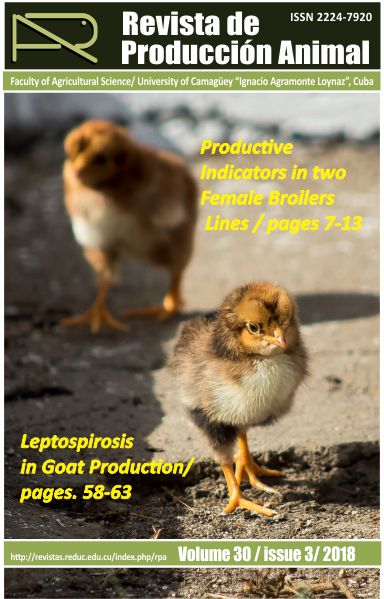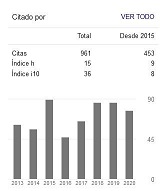Leucaena leucocephala cv Perú in Association with Graminaceae in Dryland Conditions for Final Bovine Fattening Stage
Resumen
To evaluate the factors that affect efficiency in a Leucaena leucocephala cv Perú association, with pastures for bovine fattening, 22 Zebu fattening cycles were studied on a farm of the Rectangulo Livestock Company, in Camagüey, Cuba, between 2002 and 2012. The local soil is brown without carbonates. The climate is tropical humid, and the annual precipitation average is 1 183mm. The factors evaluated were food balance, duration of the fattening cycle, and quantity of animals/cycle. The daily weight gain and expenses/income per operation were also analyzed. The pasture and Leucaena percentages were determined by plant counts. Food balances were estimated. The final value of the population of Leucaena cv Perú was 93% (P <0.05), with an increase in common Bermuda grass and other pastures. Short duration tests showed much higher gains (P <0.05), with values above 1.0 kg/animal/day. The number of animal/cycle (P <0.05) produced higher gains with fewer animals. Forest-grazing in association with Leucaena leucocephala cv Perú-graminaceae under dryland conditions produced mean daily gains above 0.800 kg/animal/day in the final stage of fattening bulls, based on food balances with adequate biological and economic results. The best behavior was observed in the shortest cycles, where the highest final weight/animal values were achieved, with fewer expenses and higher income.
Descargas
Los autores de los artículos publicados en RPA retienen los derechos de autor de su trabajo, de marca y patente, y también sobre cualquier proceso o procedimiento descrito en el artículo, así como a compartir, copiar, distribuir, ejecutar y comunicar públicamente el artículo publicado en la RPA o cualquier parte de aquel siempre que indiquen la fuente de publicación (autores del trabajo, revista, volumen, número y fecha), pero están de acuerdo en que la revista publique los trabajos bajo una licencia Creative Commons.
![]() Licencia Attribution-NonCommercial 4.0 International (CC BY-NC 4.0)
Licencia Attribution-NonCommercial 4.0 International (CC BY-NC 4.0)






































